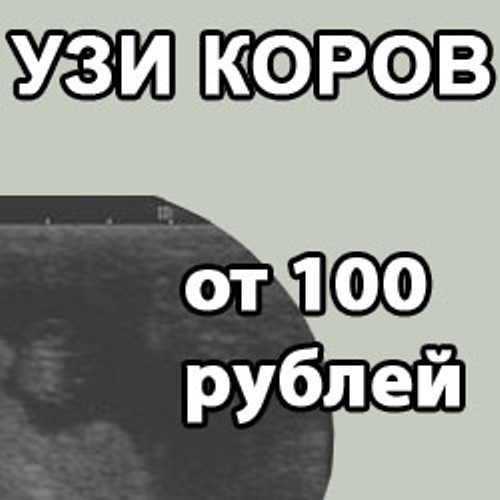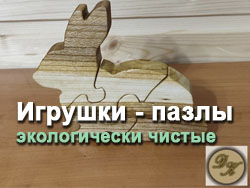- Подробности
- Категория: Ветеринария лошадей
Страхование лошадей
- Подробности
- Категория: Ветеринария лошадей
НЕПРОНИКАЮЩИЕ РАНЫ ГРУДНОЙ СТЕНКИ
Этиология. Поверхностные раны грудной стенки возникают при переломах ребер, ударах рогами, падениях на острые предметы, огнестрельных ранениях, а также при укусах хищных животных. При непроникающих ранах грудной стенки париетальная плевра не травмирована, раневой канал не проникает в плевральную полость и нет сообщений воздуха между грудной полостью и внешней средой.
Симптомы. Клинические признаки ран грудной стенки ничем не отличаются от других ран. Три признака ран — кровотечение, зияние и боль — сохраняются. Нарушение целости стенки крупных сосудов сопровождается сильным кровотечением. Повреждение нервных стволов и плечевого сплетения приводит к парезам и параличам грудной конечности. При переломах ребер, лопатки наблюдается крепитация, попадание крови в бронхи вызывает стойкий кашель. Значительная потеря крови ведет к угне-тенному состоянию, появляется бледность слизистых оболочек, шаткость при движении.
Лечение. Проводят хирургическую обработку раны. Назначают противосептические средства: сульфаниламиды, антибиотики, растворы этакридина лактата, фурацилина.
- Подробности
- Категория: Ветеринария лошадей
В 1954 г. горные части в Советской армии были расформированы. Однако жизнь показала необходимость использования лошадей в горных условиях. В начале XXI в. началось возрождение этого рода войск (создаются две горные бригады на Кавказе). Это обстоятельство заставило меня вспомнить годы службы в качестве ветеринарного врача артиллерийского дивизиона 331-го гвардейского артиллерийского горно-вьючного полка 128-й горно-стрелковой дивизии, куда я был направлен после окончания военно-ве-теринарного факультета при Московской ветеринарной академии.
- Подробности
- Категория: Ветеринария лошадей
Infected toxic form of fungus Stachybotrys alternansaffects mainly adult horse regardless of its sex, age and fatness. The colts which suck do not fall ill. First the horse disease was ascertained in Ukraine in 1930-1931. The researchers Ya.A. Fialkov and S.B. Serebryanaya extracted a toxic substance from Stachybotrys alternans fungus cultures and named it stahibotriotoksin A. The disease appears suddenly in the farm and it can spread quickly to big quantity of heads of the horse population. Acuteness of the disease course depends on degree of affection and quantity of eaten feed affected by the fungus. The cultures, which left in the field under snow, when affected by the fungus, become toxic and poison the horses. To reproduce the disease it is not obligatory a presence of alive fungus, one its toxin is quite enough for it. Thus, Stachybotrys toxicosis should be considered as toxicosis but not as mycosis. The fungus toxin brings on sharp inflammatory necrotic process in the body along the whole alimentary canal. It mainly spreads to oral cavity, in stomach and in large bowel. Agent of disease is above-mentioned fungus Stachybotrys alternans. In natural state it occurs on wet plant feed rich in cellulose 59 No.03(56) 2014 soil. Optimum temperature for growth and development of the fungus is 20-27°С, air humidity – 45-50%. In ambient environment the fungus is sensitive and perishes from usual disinfecting agents. The fungus in quantities is in the depth of the stacks of raw straw in the form of dense black malodorous coating. In the process of growth it generates and accumulates toxin – stahibotriotoksin, which causes alimentarymycotoxicosis. Practical disease research experience was carried out during period 1993 to 2013 in the Republic of Kazakhstan agricultural units operating in the west of the country.
In West Kazakhstan at Uralsk agricultural experimental station of heavy horse breeds the horses were fattened by use of mangel. When such horses were sold a pail of water was poured out to the horseback to advertise good fattening. Due to store fat the horse’s loin stretched and the water remained on the horse not spilling. When such horse was slaughtered kazy made in “five fingers”, Kazakhs say “sere”, and the fat was rose-coloured.This meat taste was peculiar: sweet and like sugared. In 2013 in West Kazakhstan 70 heads of 2-3 years of age were put on feed at the premises of Akas agricultural firm. Preliminarily the animal technicians have made diet considering all parameters according to science: grain-35% , barley – 35% , rye – 15 %, (when big quantity blindness occur), protein meal – 10% , yeast – 5%, also lucerne hay and straw. After weighting, body weight determined and dehelmintization withIvermec solution the animals were put on feed. In one month of fattening based on such diet all horses got intractable diarrhea, tympany and colic. In case of colics the animals were made Nospa preparation injection under the skin, as well as diphenhydramine hydrochloride and atropine as antidotes against poisoning. After repeated symptoms of the diseases such as colics the protein feed and yeast were excluded from diet. Diarrheastopped. Also there were cases of compulsory slaughter because of toxicity at uncertain aetiology of disease. The horses had intoxication what had a pernicious effect on blood vessel walls and central nervous system. Then the blood circulation and mineral metabolism was disturbed, the bowel fulguration focal areas appeared. Diseased states were accompanied with flaccidity, asthenia, sleepiness, often yawning. At a later date weak appetite was observed, broken wind, hidrosis and tremor of limbs muscles appeared. The horses body temperature increased up till 40° С. Sharp weakness of cardiac function began and persistent changes appeared in the blood. Simultaneously to reduction of formed elements the blood capacity reduced much, up to its total loss. The blood of the sick horse gathered to the test tube and such blood often secreted no serum absolutely (when the horse is slaughtered the jugular vein are not bleeding). Nervous manifestation syndrome was evinced in depression, disturbance of muscular coordination, the head's synclonic spasm, the poll contracture, and it was often evinced in blindness (when the horse is leading it strikes its head against the walls). With deterioration of general condition the heart rate increased till 70-80, pulse became slow and weak. Sometimes colics attendeddigestive disorders. The deep necroses were revealed on the cheeks and gingiva mucous membranes, on the tongue, lips, hard and soft palates. The mouth gave off ichorous and putrefactive odor. In most cases the disease led to death. Sometimes shockform of the disease occurred.Itdeclared itself in 5-10 hours after eaten big quantity of affected feed heavy infected with fungus. Key symptoms: fast body’s temperature rise up till 41°С, sharp weakening of cardiac function, loss of skin sensitivity. The pulse was hardly felt; pulse rate was 90 per minute. Progressive fluid lungs were fixed; the animals were in severe depression. In further the head synclonic spasm, the poll contracture,spasmodic muscular action, blindness and reducing of hearing were observed. Typical change during the disease Nervous manifestation syndrome was evinced in depression, catatonic state, disturbance of muscular coordination, the head’s synclonic spasm61No. 03 (56) 2014 nonulcer necrotizing lips’ skin damage, especially in the corners of mouth and around the nostrils, as well as on thetunica mucosa of mouth. The small bowel was changed slightly, but there were found a lot of bleeding and of black necrotic parcels in the large bowel. Thus, the spleen was not increased, but there were often found necrosis areas in the liver. The lungs were edematic. The lymph nodes, especially in the area of gullet, were increased, in section – the lymph nodes are succulent, bright red, sometimes having many bleedings. Stachybotryotoxicosis disease was revealed on the basis of analysis of epizootological data (affected feed, mass manifestation of disease), results of clinical and hematologic studies,postmortem examination, as well asmycological examination of the feeds. In the case of stachybotryotoxicosis it was used symptomatic treatment which is efficient only in initial stages of the disease. In cases of alimentary canal disorders the medicines coating the mucous membranes,abstergents and anti-inflammatory medicines (intake and into bung gut), stomach lavage withaqueous solution ofpotassium permanganate were prescribed for the sick animals, 10% solution of sodium chloride was injectedintravenously with subsequent subcutaneous introduction of adrenalin. A good medicinal effect was achieved when streptomycin was injected intravenously to the horses andphtalazol was injected. Lucerne hay and straw, suspected to be affected by the fungus, was excluded from the feeding diet, and the same straw and the feed scraps litter was removed. All horses were fed with noninfected hay. The animals were subject to daily clinical examination up till full stopping of determination of affected animals.
Conclusion
Prevention of the fungus dissemination out of the contamination areas and the fungus centers in the farm must be carried out by way ofagricultural and zootechnical measures provided for regulations for this disease prevention and control. Considering that the harmful fungus grows in the wet feeds only, it is required to gather and to stack the straw and other kinds of bulky forage in dry condition. Preventing the rough feed against soaking, it is possible to create conditions preventing the fungus growth. It is recommended to stack the forage in new places yearly in disadvantaged farms. The stacks suspected to be affected by the fungus are the stacks of the straw what was lying for long time and got soaked during harvest or when it was stacked, as well as improperly laid stacks having holes. The sections affected by the fungus are usually situated in the stack in sockets or in layers. These sections are dark, they appear in the stack where the straw is extremely wet. The sign of hard straw lesion with Stachybotrys alternans fungus is sooty easily wiped coating on its surface. Poor-quality straw stacks cannot be used in horse keeping neither as feed nor as litter. Finally it should be noticed the disease prevention and control measures.
Recommendations for production farms
The principal prevention measure against the animal stachybotryotoxicosis is compliance with agrotechnical and zootechnical requirements during forage conservation and storage. In the event of the disease the farm is declared as stachybotryotoxicosis troubling. It is required to change feeding diet immediately and to remove affected feed. Veterinarian and sanitarian measures, wet cleaning of the premise, biothermal manure disinfection, the premises disinfection withalkaline solutions are carried out in the troubled farms, as well as the rest infected feeds areannihilated. The principal measure against the animals stachybotryotoxicosis is compliance with agrotechnical and zootechnical requirements during forage conservation and storage.
Master of Agriculture
Reader in Biology and Ecology of
West Kazakhstan State University by M.Utemisov
E-mail: Этот адрес электронной почты защищён от спам-ботов. У вас должен быть включен JavaScript для просмотра. N.R. Muldakhanov
Applicant for Veterinary Science Degree
Chief Veterinary Officer of Akas farming firm
E-mail: Этот адрес электронной почты защищён от спам-ботов. У вас должен быть включен JavaScript для просмотра. Ye. R. Nuraliyev
Uralsk, Republic of Kazakhstan
To: Chief Editor
Dear Sir!
We, N.R. Muldakhanov Master of Agriculture and Ye. R. Nuraliyev Applicant for Veterinary Science Degree, are writing to your journal for purpose to publish the article “Horse stachybotryotoxicosis disease”. First this disease was ascertained in Ukraine in 1930-1931. The researchers of this disease were Ya.A. Fialkov and S.B. Serebryanaya. This disease was not researched in the Republic of Kazakhstan. We believe that our research will contribute to horse veterinary. We agree with correction made by you.
Yours faithfully,
Master of Agriculture
Reader in Biology and Ecology of
West Kazakhstan State University by M.Utemisov
E-mail: Этот адрес электронной почты защищён от спам-ботов. У вас должен быть включен JavaScript для просмотра. N.R. Muldakhanov
Applicant for Veterinary Science Degree
Chief Veterinary Officer of Akas farming firm
E-mail: Этот адрес электронной почты защищён от спам-ботов. У вас должен быть включен JavaScript для просмотра. Ye. R. Nuraliyev
- Подробности
- Категория: Ветеринария лошадей

Палец условно разделяют на область первой и второй фаланг, область третьей фаланги, область копытной подошвы и мякиша.



